The ultimate guide to building beauty brands with influencer marketing
Influencers are a key tool for beauty brands, and integral to creating trust and loyalty amongst new audiences. Discover LTK’s proven strategies, and grow your beauty brand.
Download our guide, and start using influencer marketing to grow your beauty brand.
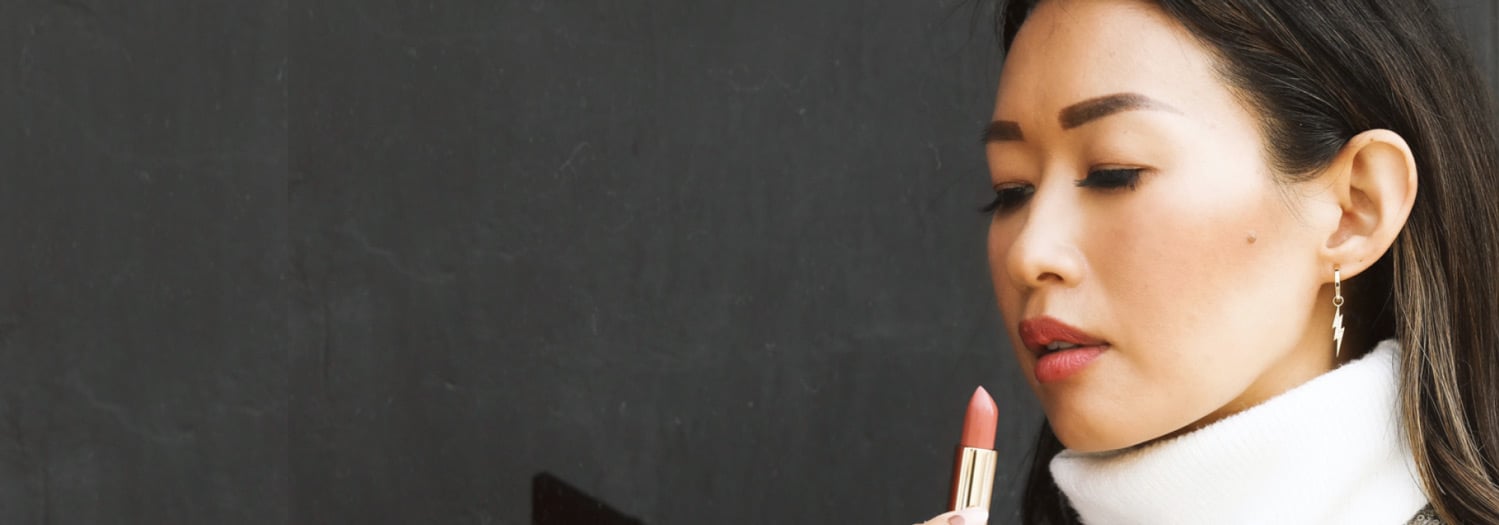
The beauty and wellness industry has something for everyone in skincare, cosmetics, hair care, and accessory products. Beauty brands are some of the most-followed and active accounts on social media, and the number one product category shopped from influencer recommendations per LTK’s national shopper study, in part because of the personalisation they add to the messaging. While this points to ample social selling opportunities, it also indicates just how competitive the space can be.
The most effective way for beauty brands to differentiate themselves in such a competitive market is by having the right influencers speak directly to their consumer. This helps people not only engage with their beauty brand but also buy from them and commit to it long-term. But beauty brands not only need that critical voice conveying their message to the world, but they also need to measure their success so they can build upon it.
In this guide, you will learn about the benefits of beauty influencer marketing with the top influencer platform, how beauty brands can utilise it to grow, sources for strategy, campaigns, and casting, and where to start the journey.
What is beauty influencer marketing?
Beauty influencer marketing: when beauty brands work with creators (influencers) who align with their brand and products to create content that connects with their specific audience to drive awareness and sales.
Beauty influencers partner with brands to create a content strategy that speaks directly to their audience in an authentic way. Through a wide array of visual and interactive content, influencers convey the brand’s message, product features and benefits, and their personal experience with the brand.
Beauty brand influencer marketing is the key to:
Reaching audiences
Establishing brand
identity in the beauty space
Effectively allocating marketing spend
Proving ROI on marketing efforts
Increasing brand visibility and awareness
Tracking data and trends for future strategy
Beauty brands can either pursue influencer connections independently, or they can work with an expert in content creator management to execute campaigns on an influencer marketing platform.
With over 30 million influencers across today’s top social platforms, brands that attempt influencer marketing independently are often overwhelmed, especially in competitive markets like beauty and wellness. It’s easy to lose campaign focus. And it’s difficult to establish the right influencer connections, maintain relationships, and pull the metrics you need to prove marketing spend and ROI.
One million brands across more than 100 countries choose LTK to deliver their influencer marketing programs at scale. With our community management network of hundreds of thousands of global lifestyle creators, ten years of unmatched data, Advanced Audience Reporting™ and top in the world in brand sales, we’re here to drive your growth strategies across multiple channels with the right influencer mix to achieve your goals.
Understanding the beauty buyer
The beauty buyer crawls social media, mostly driven by emotion and connection. Beauty and wellness products directly impact a person's wellbeing, the way they feel, how they present themselves, and how they relate to others. It’s personal, so it’s no surprise that when consumers are looking for beauty products to enrich their lives, they’re going straight to their favourite influencers for advice, who often in many circumstances have similar beauty characteristics including features and tones.
In our decade-long relationship with influencers, we’ve come to establish that beauty buyers are looking for brands that:
1
Embrace new ideals of beauty
Consumers no longer accept limited definitions of beauty. They are looking for brands that celebrate diversity and new, more relatable ideals of appearance. Brands can utilise influencers to showcase a more diverse definition of physical beauty and wellness, which will create a deeper connection with consumers.
2
Evolve with them
People change, and they want their brands to do the same. Beauty and wellness influencers help bridge the gap between brands and consumers by offering fresh content that continues to appeal to followers as they evolve.
3
Are trustworthy and sustainable
Purchases impact the world, and consumers are becoming more conscious of issues like sustainability and animal testing. Beauty wellness influencers know how to tell the story of a brand in a personal way that gives buyers confidence they’re making a smart decision. Sustainable beauty influencers, for example, can speak your message of clean products through reviews that garner genuine trust.
4
Stay innovative and on trend
The science of beauty is always changing. With a direct line to your consumers, influencers stay on the pulse of new trends and consumer demand through a constant feedback loop. Beauty brands can work with content creators to market new products and put a voice to any improvements or updates to current ones.
5
Are both educational and inspirational
Online, consumers want to learn, be entertained, and to grow. Influencers can provide educational and inspirational value through their content, about your products and how to use them. When influencers inform their audience about ingredients or techniques, they build your brand value and inspire people to purchase.
Understanding the beauty and wellness influencer
Beauty influencers are shifting away from the traditional linear approach to their personal brands. They talk about lifestyle, their day-to-day life, and the products that make it better. They bring consumers directly into their homes. They share what they eat, their nighttime routines, and the books they are reading.
This openness allows influencers to better connect with your beauty buyers from every angle. With influencer marketing, you can build deeper trust in your brand and beauty product.
As consumers look for products, they’re searching a full lifestyle landscape of their favourite influencers, who have — according to LTK’s 2021 national shopper study — become the top-ranked influential resource for what to do and buy. The benefit: a broader horizon of influence where influencers guide conversations about brands and products across all industries.
Because influencers are branching out, brands are taking notice and trying to tap into that new territory. By leveraging an influencer network platform and expert in creator management, like LTK, brands can confidently execute a successful influencer marketing strategy based on unmatched influencer data in the beauty and wellness space.
Ultimately, beauty brands use influencers in their marketing strategy because they are:
Experts in target audiences for specific niches
The most believable and relied upon sources for the majority of shoppers
The most agile, cost-effective sales channel
What to expect from beauty influencer content
Contrary to popular belief, consumers put a lot less stock in overly produced visual content. Beauty influencer marketing campaigns cut through the facade. In traditional marketing, you can expect to see highly polished and often unrealistic versions of products and even the people themselves.
Influencers don’t need “the perfect shot” unless it’s for something more challenging to convey, like a fragrance campaign. Most content in influencer marketing campaigns is raw and unrehearsed, and it’s common for influencers to post beauty and wellness content while in a bathrobe or doing a quick touch-up in the car. Unlike traditional marketing content, beauty influencer content is relatable, attainable, and more fun: everything today’s consumers want.
Ultimately, most beauty brands want their content to seem like a real testimonial, so they give influencers the autonomy to try out products for a few months before giving their feedback. This content ends up being a true declaration of their thoughts — not a shallow breakdown of a product they tried for the first time, which would be less authentic.
Whether it’s a makeup tutorial or showing “empties” (i.e. empty containers of beauty/skin favourites), all types of beauty products are a fit for an influencer marketing strategy. With the rise in video — Reels & TikTok — it’s easier than ever for beauty influencers to create quick, creative, and fun tutorials or application content that positively reflects your brand.
Beauty content is very educational, answering valuable questions for consumers, such as:
When do you use hyaluronic acid in a skincare routine?
Should you use a foundation brush or sponge?
Why should you double-cleanse?
How do you properly apply toner and what is it used for?

“2020 was a challenging year because of the pandemic, but it was also a year where we accelerated transformations. Acceleration in terms of digital, but also in terms of relationships with shoppers.”
— Patrick Sabatier, Chief Institutional Relations, Communication & Sustainability Officer L’OREAL
What beauty influencers want in beauty brands
Influencers create content according to their personal brand, which attracts a specific audience. These values impact the types of brands beauty influencers work with, whether it’s company culture, the way a product is made and tested, or the brand aesthetics.
The most common characteristics influencers look for before joining a beauty brand ambassador program:
Quality products that add value
Often, influencers choose brands and products they already use or will use regularly. A new product must be a valuable contribution to their lives, and the lives of their followers.
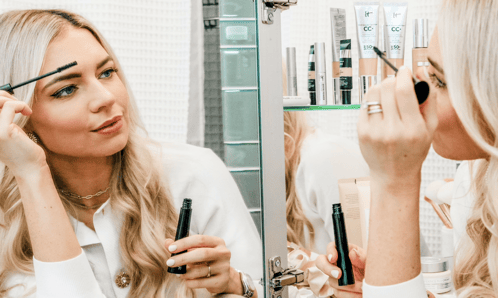
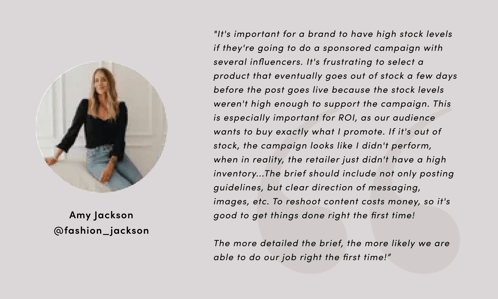
High stock levels
Influencers want to work with brands that are transparent and constantly communicate stock levels. Their audience is looking to buy exactly what they promote, so it needs to be available or communicated when stock is low.
A company mission and products that align with their personal brand
If a product goes against the personal ethos of an influencer, they will usually pass on the opportunity. That’s why it’s important to work with an expert that knows the work and values of specific influencers who will actually align with your brand from the start. Beauty wellness influencers know their followers look to them for advice, and they want to maintain that trust.
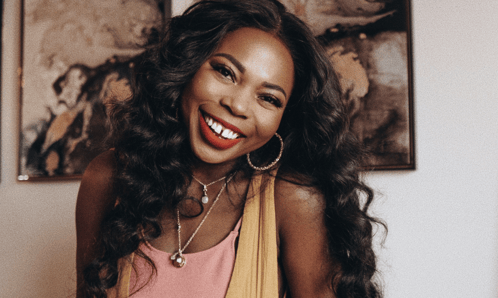
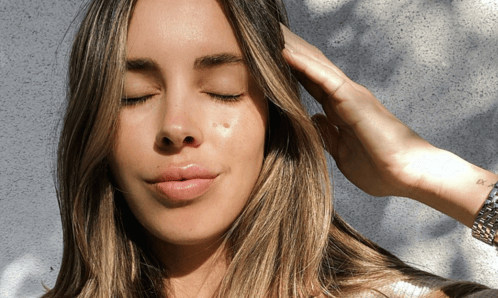
A healthy and collaborative influencer-brand relationship
How to create a successful influencer marketing campaign: have a healthy brand-influencer relationship. With time, effort, and the right approach, this can turn into a long-lasting, mutually beneficial brand ambassador program. Practise clear and early communication, provide ample lead time and timely responses and allow creative freedom to influencers. LTK utilises industry-leading tools to streamline the connection and communication between brands and influencers. This keeps campaigns on track, which means goals on both sides are being met.
Clear, insightful contracts and terms
Your contract is the catalyst for a prosperous campaign and partnership, so it has to be handled and facilitated with care. Bring your beauty campaign to life by providing talking points, and other helpful tips and guidelines that are relevant to your brand and campaign deliverables. An expert enabled by the most advanced influencer marketing management platform and influencer marketing software can help brands create a thorough influencer proposal template — keeping everything aligned and organised throughout the relationship.
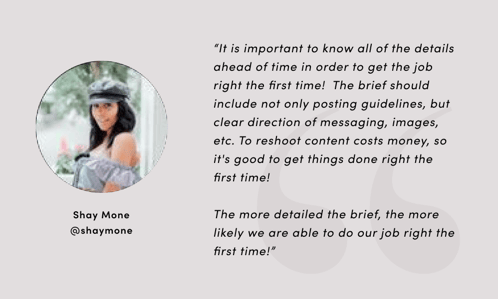
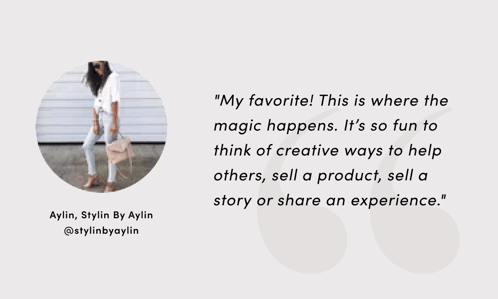
Allowing creative freedom
Trust the relationship influencers have with their followers. Allow them to craft audience-appropriate content that will come across as authentic. Ultimately, let them interpret and translate your key messages to their audience; they have a keen understanding of what will resonate around your beauty products. Brands that provide a defined idea of what they want from the partnership while avoiding being prescriptive will benefit from a successful partnership.
LTK is the top influencer marketing hub that helps brands really listen to influencers and lean into the types of content they would post organically, so that the dedicated content is more of a fit.

A touch of inspiration and guidance
While it is critical to give influencers their creative freedom, they do value some guidance in order to make the brand happy. It’s a balance between resonating best with their audience through their creative interpretation of your product, while also keeping your brand intact. Providing some content inspiration upfront, like a mood board, along with any helpful messaging can help the influencer bring the content to life in a way that will make your brand feel heard.
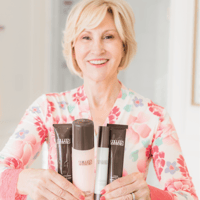
Product transparency
Beauty influencers are looking to promote products that they believe in, products that will not harm their followers. To do that, influencers need to try the products for themselves and acquire the product knowledge necessary to convey it properly through content. Most beauty influencers require sampling of the products before starting a campaign.
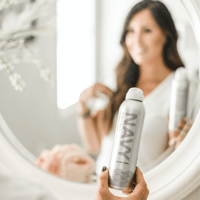
Aesthetically pleasing packaging
Beauty influencers are looking to produce creative visual content. A product that is packaged beautifully will help your brand stand out and give creators something aesthetically pleasing to work with. TikTok beauty influencers, for example, need eye-catching products for their shorter video content.
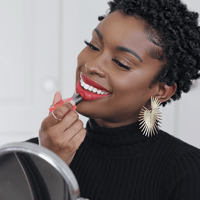
Diversity and inclusion as a top brand priority
Influencers want to work with brands that champion change, while maintaining high moral and ethical standards — the most important today being diversity and inclusion.
As the world’s largest brand and influencer platform powered by the most talented creators, tastemakers and stylists, we recognise that we have a responsibility to role model diversity and inclusivity and take deliberate actions to foster lasting and positive change — for our organisation and the industry at large.
LTK strongly recommends all brands incorporate a mix of influencers from diverse backgrounds into their campaigns. Diversity is critical to authentically connecting your brand to the world. When casting for your campaigns, work with influencers who are truly relatable and reflect the diverse world we live in.
Best practices for beauty brands looking for influencers
Searching for the right influencers is a vast undertaking. Working with influencer relationship management software and an influencer analytics platform is critical to successfully choosing influencers for your beauty campaigns. If you’re wondering how to find beauty influencers for your marketing campaigns, here are a few best practices to get you started.
-
1. Don’t focus on follower count.
When sifting through the 30+ million influencers, many brands have looked at follower count as a guiding metric. While follower count used to be one of the only indicators for popularity or possible conversions, it’s now considered a two-dimensional “vanity metric”, and no longer holds the same weight. What matters today is attention, engagement, and conversions.
So, while a mega influencer may have 1M+ followers, they may have low engagement and few conversions. A nano influencer with 10,000 or fewer followers may have higher engagement for their niche, and stronger influence for conversion. In fact, according to fashion and cosmetics professionals worldwide, as reported by Statista, the leading tiers of influencers considered to be the most effective were micro-influencers. -
2. Work with influencers who speak to Gen Z.
Gen Z makes up 40% of global consumers. The influencer to reach them is, once again, the micro-influencer: someone who has between 1,000 to 100,000 followers. As the modern-day digital “best friend”, the micro-influencer speaks directly to their followers and stays true to their niche in a relatable way.
Studies have revealed that 52% of Gen Z trust the influencers they follow. So, whether it’s a product review, makeup tutorial, or user-generated content, micro-influencers deepen trust in the path from product post to purchase. For your beauty campaigns, work with a partner to locate some of the top beauty micro-influencers.
-
3. Leverage revenue-producing influencers.
Even in the last few years, there was little insight into how much brands should pay influencers for their content, and whether to base value on impressions, engagement, followers, or other metrics. Now, with increased visibility into audience worth and a deeper understanding of metrics and attribution, you can hold influencers to the same standards as other marketing channels by looking beyond output to results.
An influencer marketing management platform and expert is the key to transparency when it comes to casting for influencers. LTK brands have access to a platform with tools to measure and sharpen campaign performance, with more precision than ever before.
From metrics like number of revenue-producing influencers (RPI) for measuring the scale of their digital salesforce, to channel performance and collaboration reporting, this tool is helping our brands see exactly who converted and why— leading the way for successful campaigns, content and channel strategy, casting, collaborating, and validating ROI.
-
4. Work with influencers of all gender identities.
Successful beauty and wellness brands are shifting their focus toward gender-inclusivity. Stigmas are fading away, and more beauty companies are working with influencers of all genders.
With an ever-growing and diverse community of influencers on the LTK platform, we have found that in the majority of households, women are buying skincare products for their significant others. So, when marketing a men’s product, we will often use female influencers. We have found, however, that brand marketing with male beauty influencers is highly effective when working to achieve awareness-driven goals, as they deliver beautiful content with high engagement rates.
According to Allied Market Research, the men's personal care industry is predicted to hit $166 billion by 2022. Just last year, men’s skin-care products alone saw a more than 7 percent jump in sales and with the category currently valued at $122 million, according to market researcher NPD Group.
In a study from the Harvard Business School, a whopping 62% of the women said they follow beauty influencers on social media. When asked where they seek information about beauty products prior to purchasing them, social media influencers ranked highest at nearly 67%, followed by third-party product reviews at 59%, and beauty professionals at 55%. Company advertisements ranked much lower at 44%, and public figures and celebrities garnered only 34%.
When a beauty brand’s goals are more traffic-focused, we often incorporate couples' content, which drives more traffic. The key takeaway, however, is that beauty brands should speak to all gender identities by working with a diverse influencer portfolio that authentically relates to all communities today.
-
5. Work with influencers who prioritise video.
Video marketing can get complicated and expensive. That’s why many brands choose influencers to take care of video content (and other visual content) for their products, from production to posting. Not only is this tactic thorough, cost-effective, and timely, but it also reaches the core shopping audience for beauty and wellness.
Whether it’s YouTube, Instagram, TikTok, or the fastest-growing influencer channel, LTK, consumers seek video content on every platform, for every purpose— and that won’t change. As they research products to purchase, they’re not only looking for static photos; they’re looking for content that shows how well a product works and what it looks like in real life.
LTK Shopping Video is the end-all-be-all of video content, featuring purpose-driven videos created for the shopper’s journey from awareness to purchase. This feature brings emotional value to products and confidence to the purchase through education.
-
6. Choose influencers who encourage user-generated content.
When casting influencers, work with those who encourage their followers to tag themselves in photos and videos. This serves as social proof and creates a steady flow of organic content that solidifies confidence in hesitant consumers. Brands can use unique hashtags in their influencer marketing strategy to develop a community of brand advocates that spread the word organically, over and over again.
-
7. Branch out to other channels and formats.
On top of influencer diversity, beauty brands should work with influencers who live on various platforms and use a variety of content formats. While a blog post may not make sense for a certain beauty product, a YouTube video may, based on past performance.
Goals vary for each brand, which is why it’s so important to work with an experienced influencer marketing hub that utilises influencer data to determine which unique qualities will benefit each campaign. It’s essential to test different types of influencers and content channels. From there, the data tells us how to grow your program going forward using the right channel, content, and influencer mix.
How influencer marketing can help large and small beauty brands grow
Influencer marketing for small business
Small beauty brands have much to gain from working with influencers because consumers love to discover new products. Who better to get a recommendation from than one’s favourite beauty or lifestyle influencer? When a consumer wants to try something new or get a sense of a new brand, they’re looking for engaging, educational, and eye-catching content from their most trusted and favourite influencers.
However, smaller brands won’t grow until they are able to test and learn. Small beauty brands need to try out different influencer channels and verticals in order to learn about their audiences and reach new consumers. Influencer marketing builds a bridge from your small beauty brand to a larger audience — and makes the path to purchasing your products (and tracking those purchase trends) much easier.
Helping larger businesses scale
Larger beauty brands can substantially scale by working with a large group of influencers. From there, they can see who is a fit for an ambassador, while continuing to grow new relationships. Through influencer marketing management, larger beauty brands can deepen influencer relationships and expand to new influencers (i.e. consumers) at the same time. It's the most effective marketing strategy for achieving “cult-favourite” status for your beauty products, which is what every beauty brand wants.
Bigger beauty brands also have the benefit of being able to test and learn a little faster than smaller brands because their budgets typically allow more flexibility. They should allocate their budgets to test different types of influencers and channels and learn from the results to strategically grow their program.
How to maximise your strategy with influencer marketing software and creator management
In-house marketing teams look for influencers who can be an extension of their team and help them tap into new, broader territory. While many brands have their own relationships with influencers in-house, executing influencer marketing campaigns can be complex because they require a lot of moving parts, like:
Determining goals and budget
Influencer research and casting
Determining target deliverables
Writing contracts
Negotiating rates
At LTK, we help brands — even various departments within the brand’s company — take their existing efforts and amplify them to scale in a meaningful way. Brands are realising that this is more cost-effective than completely outsourcing to an agency, or relying on an agency that might not have data-based testing or tracking.
In today’s digital landscape, it’s especially critical for businesses to rationalise their marketing spend and tie it to performance. Experts like us offer beauty brands access to an extensive influencer analytics platform and data to tell you where to place your bets in a rapidly changing environment.
Where to start your beauty influencer marketing journey
Many brands new to influencer marketing aren’t sure where to start. We recommend starting with a test campaign, guided by performance data to get a strategy going strong.
As the top influencer marketing hub for the last decade, LTK understands and solves influencer marketing challenges through:
- Amplified distribution through the largest creator shopping channel: shopLTK.com with 30M+ shoppers
- Full-service creator programs that deliver on your unique objectives
- Strategic planning based on historical brand performance data
- Expert brand consulting, planning, executing, and reporting
- End-to-end campaign execution and influencer casting
- Access to the most successful influencer platform in the world
- Licensed imagery from premium creators for your own marketing channels
- Conference and event integration to build long-term relationships
- Access to real-time measurable results on the top influencer campaign management software
You can use your test campaign as an opportunity to discover best-match influencers who convert. Then, as you start to think about a longer-term strategy, our beauty influencer marketing platform will help you secure those influencers as your ambassadors.









